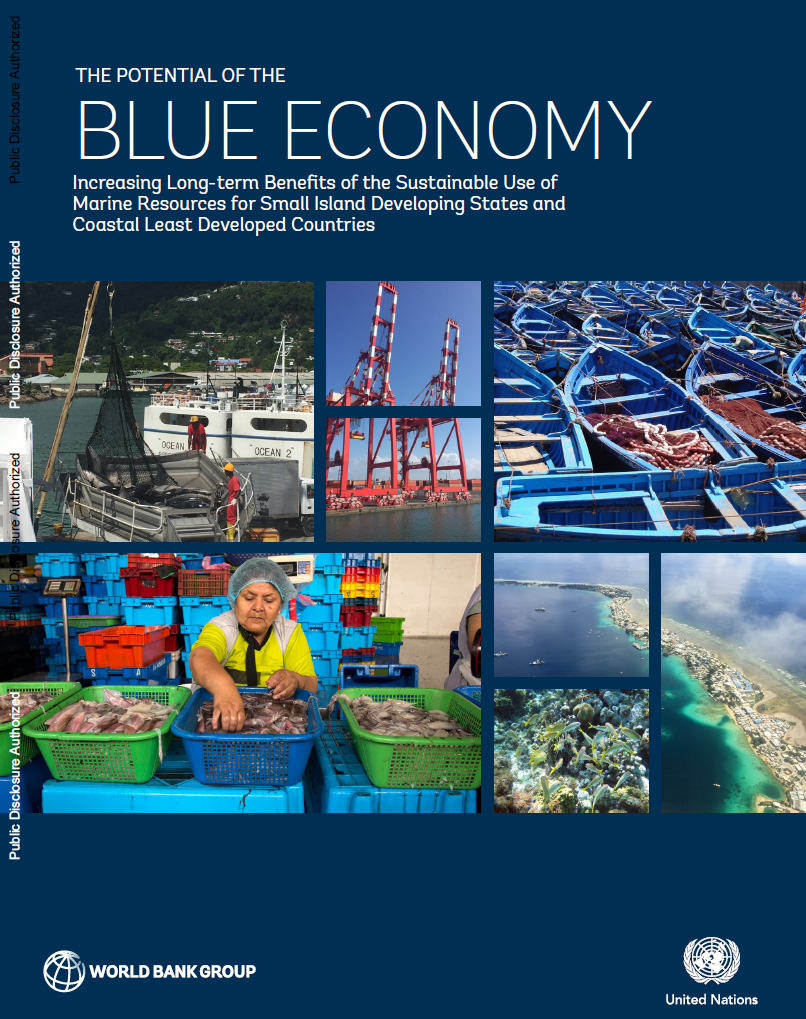Resilience Building In Least Developed Countries: Strategies For Sustainable Transformation

Table of Contents
Strengthening Economic Resilience
Economic fragility is a major vulnerability for LDCs. Diversification, financial inclusion, and investment in human capital are crucial for building a resilient economy.
Diversification of Economic Activities
Over-reliance on a few key sectors, such as agriculture or raw material exports, leaves LDCs susceptible to price shocks and global market fluctuations. Diversification is paramount.
- Promote value-added processing of agricultural products: Instead of exporting raw crops, processing them domestically creates higher-value products and more jobs. This could involve investing in food processing facilities, improving storage and transportation infrastructure, and developing value chains.
- Invest in renewable energy and green technologies: This not only reduces reliance on imported fossil fuels but also creates new economic opportunities in a growing sector. Investing in solar, wind, and geothermal energy can improve energy access and security.
- Develop tourism infrastructure and promote sustainable tourism: Tourism can be a significant source of revenue and employment, especially if managed sustainably to minimize environmental impact and maximize benefits for local communities. This includes responsible development of tourist sites, training local guides and hospitality professionals, and promoting eco-tourism.
- Foster entrepreneurship and small and medium-sized enterprises (SMEs): SMEs are the backbone of many economies, providing jobs and driving innovation. Supporting SMEs through access to finance, business development services, and favorable regulatory environments is crucial.
Enhancing Financial Inclusion
Limited access to credit and financial services hinders economic growth and resilience. Expanding financial inclusion empowers communities and businesses.
- Expand mobile banking and digital finance solutions: Mobile money and other digital financial services can overcome geographical barriers and provide access to financial tools for previously excluded populations.
- Support microfinance institutions and initiatives: Microfinance provides small loans and financial services to individuals and small businesses, fostering entrepreneurship and economic activity.
- Develop robust financial regulatory frameworks: A strong regulatory framework promotes transparency, stability, and investor confidence, attracting investment and driving economic growth.
- Promote financial literacy programs: Educating individuals and businesses about financial management improves their ability to utilize financial services effectively.
Investing in Human Capital
A healthy, educated, and skilled workforce is the foundation of a resilient economy. Investment in human capital yields long-term benefits.
- Invest in quality education and vocational training programs: Providing access to quality education and skills development equips individuals with the knowledge and abilities needed for employment and entrepreneurship. This also promotes innovation and technological advancement.
- Improve healthcare infrastructure and access to healthcare services: Good health improves productivity and reduces vulnerability to disease outbreaks, ensuring a healthy and productive workforce.
- Promote gender equality and empower women: Empowering women through education, access to resources, and economic opportunities leads to significant societal and economic benefits.
- Address malnutrition and improve food security: Addressing malnutrition improves health, productivity, and the overall resilience of the population.
Enhancing Environmental Resilience
LDCs are disproportionately vulnerable to environmental challenges, particularly climate change. Building environmental resilience is critical for sustainable development.
Climate Change Adaptation and Mitigation
Climate change poses significant threats to LDCs, including increased frequency and intensity of extreme weather events, sea-level rise, and droughts.
- Implement climate-smart agriculture practices: Adopting drought-resistant crops, improved water management techniques, and sustainable farming methods helps agriculture adapt to changing climate conditions.
- Invest in early warning systems for natural disasters: Effective early warning systems save lives and reduce the economic impact of disasters.
- Develop drought-resistant crops and water management techniques: Improving water resource management and developing drought-resistant crops ensures food security in the face of climate change.
- Protect and restore ecosystems (forests, wetlands): Healthy ecosystems provide essential services like carbon sequestration and flood control. Protecting and restoring them improves environmental resilience.
Sustainable Resource Management
Responsible use of natural resources is vital for long-term sustainability. Sustainable resource management practices must be adopted.
- Promote sustainable forestry practices: Sustainable forestry practices ensure the long-term health of forests, which are vital for biodiversity, carbon sequestration, and livelihoods.
- Implement responsible fishing practices: Overfishing depletes fish stocks and undermines food security. Sustainable fishing practices ensure the long-term health of fisheries.
- Manage water resources effectively: Efficient water management is crucial for agriculture, industry, and human consumption.
- Reduce waste and promote recycling: Reducing waste and promoting recycling reduces environmental pollution and conserves resources.
Disaster Risk Reduction
Preparedness and mitigation are vital for minimizing the impact of disasters. Investing in disaster risk reduction saves lives and reduces economic losses.
- Develop and implement disaster preparedness plans: Comprehensive disaster preparedness plans ensure effective response to emergencies.
- Strengthen early warning systems: Effective early warning systems give communities time to prepare and evacuate, reducing casualties and economic losses.
- Invest in disaster-resistant infrastructure: Building resilient infrastructure reduces the damage caused by disasters.
- Promote community-based disaster risk reduction strategies: Engaging communities in disaster risk reduction ensures their participation and increases the effectiveness of mitigation efforts.
Fostering Governance and Institutional Resilience
Strong governance and institutions are fundamental for building resilience. Good governance, capacity building, and international cooperation are crucial.
Good Governance and Transparency
Accountable and transparent governance strengthens institutions and builds trust.
- Promote participatory governance and citizen engagement: Engaging citizens in decision-making ensures that policies reflect the needs of the community.
- Strengthen anti-corruption measures: Corruption undermines development and erodes trust in institutions. Strong anti-corruption measures are vital.
- Improve public financial management: Efficient and transparent public financial management ensures that resources are used effectively and accountably.
- Enhance the rule of law: A strong rule of law ensures fair and equitable treatment for all citizens, fostering stability and economic growth.
Capacity Building
Empowering local institutions through capacity building is essential for long-term success.
- Invest in training and development programs for government officials: Training programs equip government officials with the skills and knowledge needed to effectively manage resources and implement policies.
- Strengthen local governance structures: Strong local governance ensures effective service delivery and community engagement.
- Promote knowledge sharing and collaboration: Sharing knowledge and best practices across institutions improves efficiency and effectiveness.
- Support the development of effective policies and regulations: Effective policies and regulations create a stable and predictable environment for investment and economic growth.
International Cooperation and Partnerships
Collaboration is crucial for sharing resources and knowledge, facilitating access to funding and expertise.
- Secure funding from international development partners: Securing funding from international development partners provides financial resources to support resilience-building initiatives.
- Foster collaboration between governments, NGOs, and the private sector: Collaboration among stakeholders ensures a coordinated and comprehensive approach to resilience building.
- Access technological expertise and knowledge transfer: Access to technological expertise and knowledge transfer facilitates the adoption of innovative solutions.
- Promote South-South cooperation and knowledge sharing: South-South cooperation allows LDCs to learn from each other's experiences and share best practices.
Conclusion
Building resilience in Least Developed Countries requires a holistic and integrated approach encompassing economic diversification, environmental sustainability, and strong governance. By implementing the strategies outlined above – focusing on economic resilience, environmental resilience, and governance resilience – these nations can pave the way for a more sustainable and resilient future. Investing in resilience building in Least Developed Countries is not merely an act of charity, but a crucial step towards global stability and prosperity. Let's commit to supporting initiatives focused on strengthening resilience building in Least Developed Countries and fostering their sustainable transformation. The future of these nations, and indeed the global community, depends on it.

Featured Posts
-
 Lewis Capaldi And Unexpected Towie Friend A Happy And Healthy Update
May 07, 2025
Lewis Capaldi And Unexpected Towie Friend A Happy And Healthy Update
May 07, 2025 -
 The John Wick Experience Las Vegas Arrival
May 07, 2025
The John Wick Experience Las Vegas Arrival
May 07, 2025 -
 Rudy Goberts Absence How Edwards And Conley Will Impact Jazz Vs Rockets
May 07, 2025
Rudy Goberts Absence How Edwards And Conley Will Impact Jazz Vs Rockets
May 07, 2025 -
 Alex Ovechkins Advisor Role At Dynamo Moscow Presidents Statement
May 07, 2025
Alex Ovechkins Advisor Role At Dynamo Moscow Presidents Statement
May 07, 2025 -
 Victor Robles Injured After Spectacular Catch In San Francisco
May 07, 2025
Victor Robles Injured After Spectacular Catch In San Francisco
May 07, 2025
Latest Posts
-
 Wlyma Tqryb Myn Almnak Waqeh Gjranwalh Myn Dlha Ka Antqal
May 08, 2025
Wlyma Tqryb Myn Almnak Waqeh Gjranwalh Myn Dlha Ka Antqal
May 08, 2025 -
 Made In Gujranwala Exhibition A Success Celebrated By Sufian And Gcci
May 08, 2025
Made In Gujranwala Exhibition A Success Celebrated By Sufian And Gcci
May 08, 2025 -
 Dl Ka Dwrh Gjranwalh Myn Wlyme Ke Dn Dlha Ky Mwt
May 08, 2025
Dl Ka Dwrh Gjranwalh Myn Wlyme Ke Dn Dlha Ky Mwt
May 08, 2025 -
 Mraksh Ke Sahl Pr Kshty Hadthh Awr Ansany Asmglng 4 Grftaryan
May 08, 2025
Mraksh Ke Sahl Pr Kshty Hadthh Awr Ansany Asmglng 4 Grftaryan
May 08, 2025 -
 Gjranwalh Wlyme Ky Tqryb Myn Dl Ka Dwrh Dlha Jan Bhq
May 08, 2025
Gjranwalh Wlyme Ky Tqryb Myn Dl Ka Dwrh Dlha Jan Bhq
May 08, 2025
